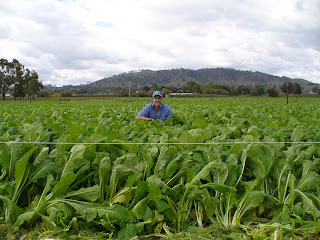Late maturity refers to the time following winter that ryegrasses cultivars will become reproductive, wanting to produce seed. During the reproductive stage ryegrass quality declines, plant leaf production decreases and a large amount of stem is produced. The time taken to reach the reproductive stage depends on the individual cultivars vernalisation requirement. Vernalisation refers to the cold time (time below a specific temperature) required for a cultivar to initiate the reproductive stage of it's growth period.
The picture above highlights annual cv Atomic on LHS showing signs of seed head emergence while annual cv Zoom on RHS is still leafy, productive and retaining quality.
The picture above highlights annual cv Atomic on LHS showing little regrowth following mowing while annual cv Zoom on RHS has recovered well. Atomic being earlier maturing has finished its seasonal growth.
Early maturing cultivars have a lower cold requirement, meaning less cold time is required before flowering is initiated. Later maturing cultivars offer greater quality, production and flexibility because they continue to grow and produce quality feed while earlier maturing cultivars are slowing in growth and producing poor quality feed high in stem and low in leaf. In most farming situations feed quality will mean more meat & milk production and better quality silage & hay.
It is important to understand that a large proportion of growth occurs from initiation of reproduction to seed head emergence. This means earlier maturing cultivars will often produce more early spring growth. While later maturing cultivars will hold their quality, an earlier maturing cultivar will produce more feed in an area that finishes early and is unlikely to receive good spring rainfall (< 500 mm/yr). Nevertheless high rainfall environments ( > 600 mm/yr) will likely benefit from most later maturing cultivars, with the latest maturing cultivars being sown in the latest seasonal areas.
Below is a cost comparison for a farm comparing annual cv. Tetila (early maturing), annual cv. Zoom (late heading) and Italian cv. Crusader (very late heading). The cost analysis doesn't take into account quality, which would be considerably better for the later maturing cv.
Click on photo to enlarge













